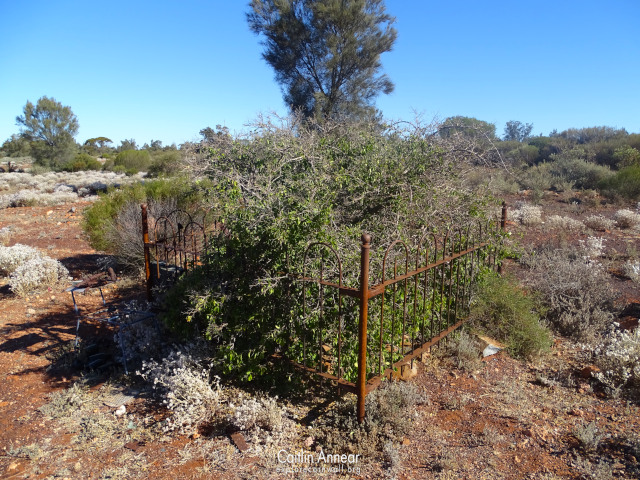Seventy five miles north of Coolgardie is the ghost town of Siberia, the sight of one of the deadliest goldrushes in the history of the Goldfields.
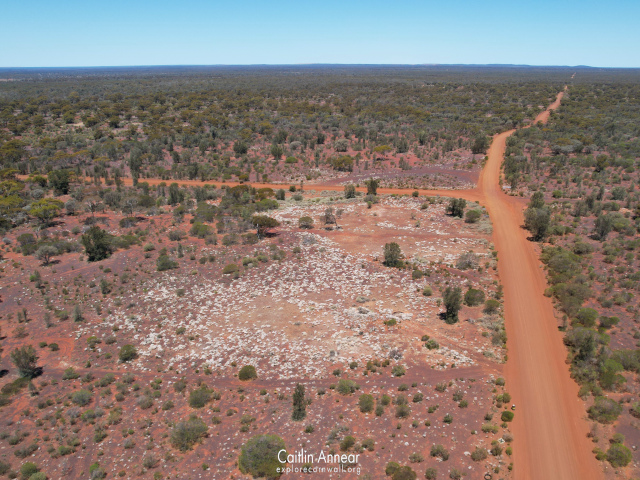
The bottom left of the picture, underneath the road going left, is where the main section of the town once stood
The history of this town began on the 19th October 1893 when Billy Frost and Bob Bonner carried 40 ounces of gold back to Coolgardie. The rush that ensured, despite warnings of the desperately dry conditions, was particularly deadly and the exact number of those who perished remains unknown. Covering 75 miles (120 km) of treacherous ground, often with little or no water, those who did return, mostly returned with empty hands. While the original finds may have been considered ‘rich’, these were small and troubling to find.
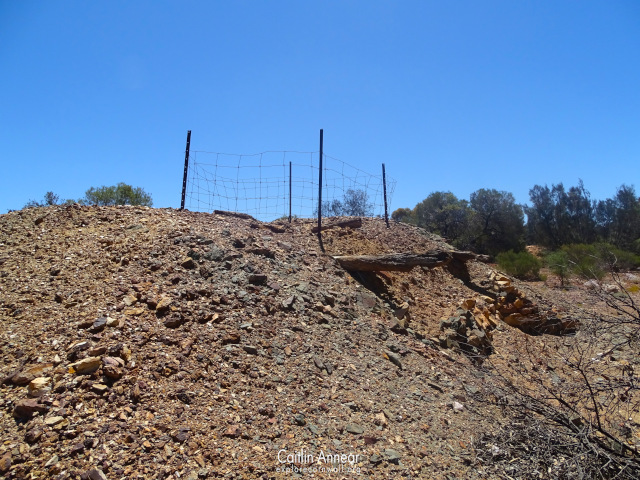
Just a few weeks after the rush began, a man named Vaugh returned from the area bringing news of roughly 50 men at Siberia, that the only water was 7 miles (11 km) away at a soak and the whole venture was a disaster. An official from the Water Supply Department soon organised a team of camels to take water up to Siberia, giving half a gallon to each man he met, saving many lives. The actual number that died during this rush is unknown.
In 1905, the population of the town remained small. Roughly 80 individuals stayed out there, and the township consisted of 5 corrugated structures, a post office, miners institute and two hotels. The town didn’t last for very long, and all that can be seen today is a small graveyard and the stoney remnants of the Reward Hotel.
The Bougainvillea
Planted by Mabel Kirkham in 1908 as a memorial to her infant boy on the site of the Reward Hotel. The bougainvillea has been kept alive and well by passers by and is one of the few features left of this abandoned town
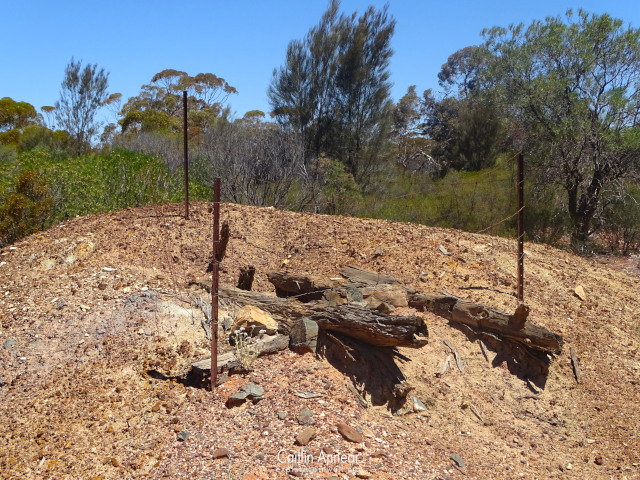
To Hell or Siberia
‘Whoever named the eastern portion of the Coolgardie goldfields Siberia must have been disagreeably impressed with his surroundings, as a name linked with such associations cannot be considered complimentary’ – V.J 1905
The origin of the Siberia name is a bit of a mystery; it may have been a joke played by Frost, referring to the harsh conditions of the trek, or from the Siberia Tank, a water supply nearby. During a meeting in 1985 it was suggested that the Aboriginal word ‘Wongi’ (from a nearby hill and soak) was used for the site, but this didn’t stick and the town was officially named Waverly in 1989. Despite this, the town was rarely known as anything but Siberia.
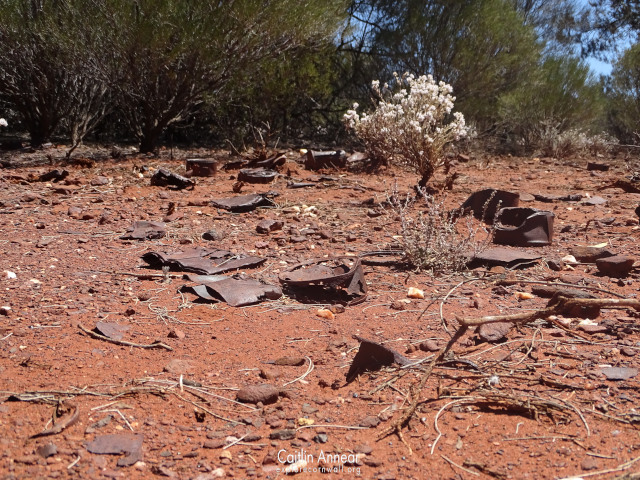
The Siberian Goldfield was made up of a number of leases, not just the original Reward or Waverly claim (which is north of the townsite). These include Pole, Lochiel, Golden, Camperdown, Invincible, Christmas, Mexico, The Independent, Courage, Merriwee King, The Nevertire, Prospector’s Gully and Admiral Dewey, among others.
The claim that lies closest to the town is that of Bonnie Doon – this was first worked by a man named Colin McCulloch for a syndicate in Melbourne, but the 12 reefs on the lease proved poor. In 1895, after a year of work, he found 200 ounces (5.6 kg) of gold. A new company was started called Bonnie Doon Goldmining Company Siberia, but following the discovery of just 60 further (1.7 kg) ounces of gold, the venture proved futile. There were a few more rich patches, but following a devastating fire in 1897, the mine came to an end. It was worked intermittently by several parties after this, but only small amounts of ore were gained. It had a shaft reaching 160 ft (49 m).
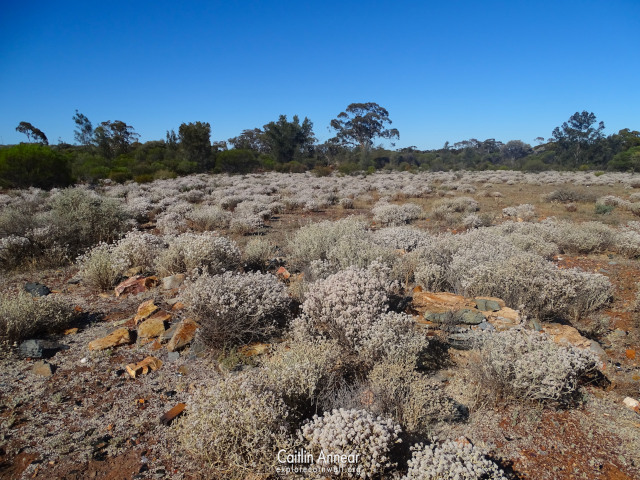
Access is available to anyone. The surrounding area is littered with old mine workings, so stick to the main area.
The road from Ora Band is uncapped, but in very good condition.
There is a small free carpark at the cemetery.
Fairbourne, J. (1893, November 27). The Superintendent of Water Supply and the Siberia Rush. The West Australian. https://trove.nla.gov.au/newspaper/article/3055224?searchTerm=siberia
Joyner, T. (2019, March 6). Grieving mother’s memorial to her child kept alive by strangers a century on – ABC News. ABC Goldfields. https://www.abc.net.au/news/2019-03-06/how-strangers-kept-a-dead-childs-memory-alive-for-117-years/10823054
King, N. (1974). Ghost Towns of the North Country.
Landgate. (2021). Town names. http://www0.landgate.wa.gov.au/maps-and-imagery/wa-geographic-names/name-history/historical-town-names#S
Montgomery, A. (1909). Report of Waverley or Siberia District. https://purl.slwa.wa.gov.au/slwa_b1151114_37.pdf
Renou, F. (1893, November 10). The New Find at Coolgardie. The Inquirer and Commercial News. https://trove.nla.gov.au/newspaper/article/71893000?searchTerm=siberia
Siberia. (1895, October 17). The Hannan’s Herald. https://trove.nla.gov.au/newspaper/article/227992604?searchTerm=siberia
Siberia. (1898a, September 24). Coolgardie Pioneer. https://trove.nla.gov.au/newspaper/article/251964367?searchTerm=siberia
Siberia. (1898b, September 30). Coolgardie Miner. https://trove.nla.gov.au/newspaper/article/217324381?searchTerm=siberia
Siberia. (1900a, August 20). Herald (Coolgardie). https://trove.nla.gov.au/newspaper/article/251433953?searchTerm=siberia
Siberia. (1900b, September 26). Coolgardie Miner. https://trove.nla.gov.au/newspaper/article/217371419?searchTerm=siberia
Siberia. (1901, March 24). Coolgardie Pioneer. https://trove.nla.gov.au/newspaper/article/251991090?searchTerm=siberia
v. J. (1905, April 29). Siberia. The West Australian. https://trove.nla.gov.au/newspaper/article/25380692?searchTerm=siberia

